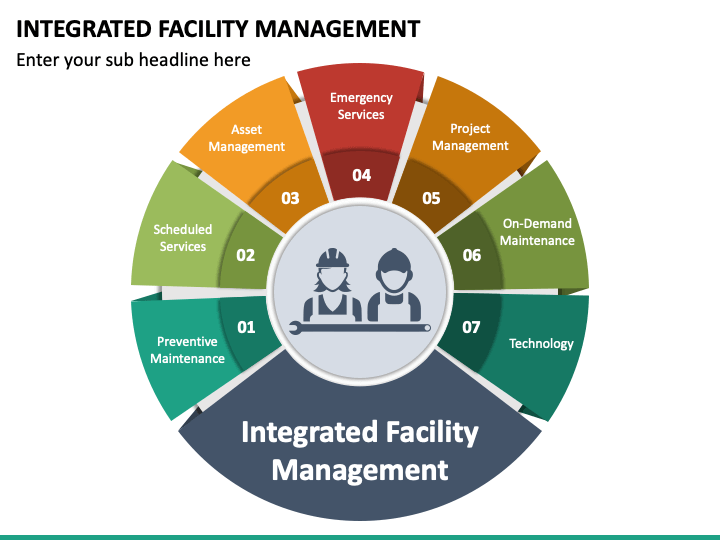Key Reasons to Choose Total Facility Management for Your Business
Key Reasons to Choose Total Facility Management for Your Business
Blog Article
Top Benefits of Total Facility Management for Streamlined Workflow
Total Facility Management (TFM) stands for a strategic technique to enhancing functional efficiency by incorporating various solutions, such as maintenance and safety, under a unified management framework. The inquiry stays: what details advantages can companies harness from adopting TFM, and exactly how might these advantages transform their functional landscape?
Enhanced Operational Performance
Enhanced functional performance is a primary advantage of applying total facility management (TFM) approaches. TFM encompasses a thorough strategy to managing a facility's resources, procedures, and facilities, inevitably streamlining operations. By combining different solutions-- such as upkeep, cleansing, space, and safety and security management-- TFM boosts and decreases redundancies control amongst different operational functions.
The integration of technology further enhances this effectiveness. Advanced facility management systems offer real-time data analytics, allowing facility managers to make informed decisions that improve workflow and source allocation. Anticipating upkeep strategies, for instance, prepare for devices failings before they occur, decreasing downtime and extending asset life-span.
In addition, TFM advertises standard processes across numerous divisions, making sure consistency and quality in service distribution. This harmony minimizes operational disruptions and cultivates a much more collective workplace. As an outcome, workers can focus on their core duties, driving performance and improving overall efficiency.

Cost Reduction and Financial Savings
Executing total facility management (TFM) not only enhances operational effectiveness yet also considerably adds to cost reduction and cost savings. By settling various services under a solitary management structure, organizations can get rid of redundancies and simplify processes, thus minimizing functional costs. TFM allows much better purchase strategies, allowing business to discuss bulk investing in agreements with providers and solution carriers, bring about lower rates.
Moreover, TFM highlights preventive maintenance, which lessens unforeseen malfunctions and prolongs the life-span of critical equipment. This positive method not just decreases repair service expenses however likewise improves the dependability of facilitiess, making sure undisturbed procedures. Furthermore, energy effectiveness initiatives, typically an essential focus of TFM, lead to substantial savings on energy costs, as facilitiess are enhanced for reduced energy intake.
Improved Source Management
Effective source management is a foundation of total facility management (TFM), allowing organizations to optimize using their properties and workforce. By executing TFM strategies, organizations can adequately examine their resource allocation, ensuring that every property is used efficiently and properly. This alternative method permits the recognition of underperforming resources and the possibility for reallocation or improvement.
In addition, TFM promotes the combination of technology for real-time surveillance of resources, which assists in anticipating maintenance requirements and preventing pricey downtime. By leveraging data analytics, companies can redirected here make educated choices regarding source implementation, inevitably improving performance and decreasing waste.
Moreover, TFM promotes a society of continuous renovation, encouraging groups to routinely review and refine their source management practices. Total Facility Management. This aggressive stance not only decreases operational interruptions yet also promotes technology, as employees are equipped to recommend improvements based on their direct experiences with source usage
Streamlined Interaction Networks
In total facility management, structured interaction networks play an important duty in cultivating collaboration and effectiveness throughout groups. Reliable communication guarantees that all stakeholders, consisting of facility supervisors, maintenance team, and provider, are lined up with operational demands and business objectives. By developing clear lines of interaction, groups can promptly address issues, share updates, and execute options, consequently decreasing downtime and boosting productivity.
With centralized communication platforms, information is easily accessible, permitting real-time updates on maintenance requests, source allocation, and project timelines. This openness not just lowers misconceptions yet additionally equips workers to make educated decisions rapidly. Additionally, streamlined communication facilitates far better learn this here now control throughout emergencies, guaranteeing that all personnel are informed and can react immediately.

Increased Focus on Core Activities
A crucial benefit of total facility management is the increased focus on core tasks, permitting companies to focus on their primary company goals - Total Facility Management. By contracting out non-core features such as cleansing, safety, and upkeep, firms can reroute their sources and power in the direction of calculated campaigns that straight add to their competitive advantage and growth
Total facility management integrates different operational tasks under a solitary umbrella, fostering efficiency and reducing redundancy. This debt consolidation not only enhances processes but also boosts liability, making certain that every facet of the facility operates sympathetically without drawing away interest from what genuinely matters-- core company functions.
Furthermore, this strategy makes it possible for workers to devote their time and efforts to jobs that drive technology and enhance customer complete satisfaction, rather than obtaining slowed down by operational obstacles. With a trustworthy facility management companion dealing with day-to-day procedures, organizations can attain higher agility, react swiftly to market adjustments, and preserve a sharper focus on their objective.
Eventually, why not check here increased concentrate on core tasks results in boosted overall efficiency, allowing companies to reinforce their market setting and accomplish their tactical objectives better. - Total Facility Management
Verdict
In final thought, Total Facility Management substantially boosts functional performance by settling essential services and leveraging data analytics for informed decision-making. Cost reductions and improved resource management add to total financial savings, while structured interaction networks foster cooperation amongst stakeholders.
Total Facility Management (TFM) represents a strategic approach to enhancing functional performance by incorporating numerous solutions, such as maintenance and safety and security, under a unified management framework.Boosted functional performance is a main benefit of executing total facility management (TFM) techniques. Advanced facility management systems give real-time data analytics, enabling facility managers to make educated choices that boost workflow and source allowance.Carrying out total facility management (TFM) not only improves functional effectiveness but also dramatically adds to cost decrease and cost savings.Efficient source management is a cornerstone of total facility management (TFM), allowing organizations to maximize the usage of their assets and labor force.
Report this page